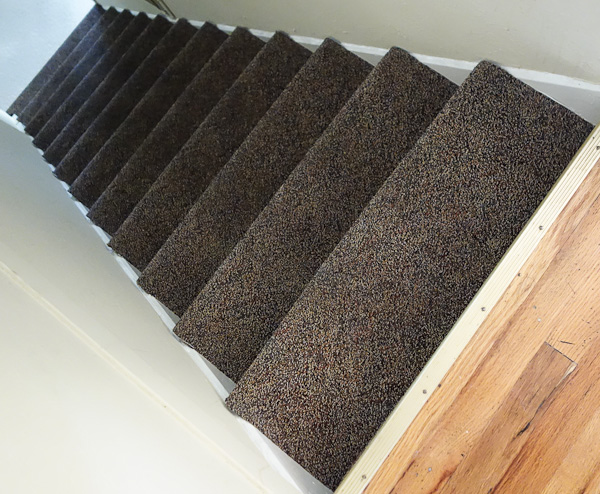I’ve been circling around and around some ideas that I want to use in my next novel, The Big Aha. In today’s post, I’ll expand on some of the remarks in my October 15, 2012, post, “SF Religion 3: Qwet.” But my focus isn’t on religion in today’s post, it’s on the nature of mind and the possibility of telepathy.
Open your (inner) eyes to your true mental life. Your state of mind can evolve in two kinds of ways that I’ll fancifully call—“robotic” and “cosmic”. The “robotic” mental processes proceed step-by-step—via reasoning and analysis, by reading or hearing words, by forming specific opinions. Every opinion diminishes you.

The “cosmic” changes are preverbal flows. If you turn off your endlessly-narrating inner voice, your consciousness becomes analog, like waves on a pond. You’re merged with the world. You’re with the One. It can be a simple as the everyday activity of being alert—without consciously thinking much of anything. In the cosmic mode you aren’t standing outside yourself and evaluating your thoughts.
The cosmic mode is what’s happening between/behind/around your precise robotic communicable thoughts. The idea is to notice the spaces between your thoughts, or to avoid being caught up in your thoughts. This is a fairly common meditation exercise.
We might have some specific brain sites that control when our state of consciousness flips from being with the One, that is, in a smooth, mixed, continuous or “cosmic” state—of being with the Many, that is, down to the “robotic,” specific-opinion state. If you’re a dreamy sort of person, your natural trend is to drift out to unspecificity, out the One. But other personality types tend always to be pushing down into the robotic, studying the details of the Many.

I’m imagining a qwet treatment that helps you can get into—and remain within—a smooth state for a longish period of time.
As I’ve often said, I have the experiential sensation that my mind oscillates between One/Many about sixty times per second. Between the “cosmic”/”robotic” consciousness modes. You do need both modes to get buy. The One state is like a radar ping you reach out into the world around you, and the Many state is when you say, “Okay, I’m alone here, it’s me against the world, what do I do next to stay alive?”
Breaking away from the cosmic mode can be thought as involving a quantum collapse. You go from a broader, more ambiguous state to a more specific state. How does the collapser work? It affects not just you, but the things that you’re looking at and coupled to. Everything around you becomes overly precise, that is, robotic instead of cosmic. Less interesting. Like—think of they way that some people can make a whole scene dull just by the way they start talking about it. “How much did that cost? Is that safe to have around? Did you notice the scratch on it?”

Do animals have collapsers? Do physical objects? Let’s say “not usually.” Might the ability to collapse be connected to having consciousness? Let’s say “yes.”
What if I use the Antonio Damasio’s definition of consciousness as “the ability to visualize yourself visualizing yourself.” You can watch a model of yourself watching yourself. It’s a three-level map. Actor, strategist, analyst. The actor just does things, like an animal. The strategist observes the actor and makes corrections. The analyst observes the strategist’s decisions and improves on them.
Suppose that this is a kind of physical map, a three-tier flow of quantum information, and that for a fixed-point theorem type reason, these flows cause quantum collapse—they throw a system into an eigenstate, that is, into a robotic, non-cosmic, fixed point. Humans are the main things that are three-tier collapsers, but such collapsers do occur naturally in certain places, just as certain types of crystals or mirrors might be found in nature. The spots with collapsers seem to have bad juju, that is, they’re inherently boring.
I see the collapsers as being like snags in a rushing muddy river of quantum flow. And the snags leave precise ripple wakes. And there can be a kind of beauty to the moiré patterns of the overlaid wakes—this is what we call our human culture.

In my novel, I want to work with the idea that managing to stay in the uncollapsed cosmic state, they can achieve a kind of telepathy. You can couple your “cosmic” mental state to the “cosmic” state of another person. I won’t be like a phone conversation. Your thoughts aren’t at all like a page of symbols—they’re blotches and rhythms and associations.
Key Plot Point: For quantum theoretic reasons, a quantum link between the two systems isn’t of a kind that can leave memory traces, otherwise the link is functioning as an observation that drags consciousness back down to the robotic mode. So you can’t directly exchange specific, usable info via quantum teep. In my novel this will be a disappointment to the government backers of the qwet experiments.
But your mind state will be changed by your teep interactions. But not in the obvious way of “remembering what they ‘said’.” After teeping with someone, when you later drop back down into your chatty “robotic” state, you’ll find that you are saying things you wouldn’t have said before the merge. But maybe you’re not sure why.

This isn’t so different from a memory of a very deep, close, intense conversation with someone—a talk where you really got onto the same wavelength. Like a talk in bed with a lover, or chatting happy with a pal, or, getting into deep concepts with an admired mentor—telepathy happens.









October 25th, 2012 at 2:30 pm
Ah. This is good.
October 26th, 2012 at 10:54 am
Rudy, as a writer you may want to check out the naturist, David Abram’s book “spell of the sensuous” . I was thinking this morning of one of your books, and just popped over here to see what you are thinking. I zipped over to your SF-Religion Part 1 and David Abrams name a popped up. I had already thought you would like Abram’s writing from this posting, before I read the other posting. Abram , Abrams, Close enough to call synchronicity Jungian/pauli style if you ask me. 😀
October 28th, 2012 at 9:22 am
Rudy, For the life of me I do not see why, in addition to what you do now, you are not a professional photographer after viewing your many posted photos. I just absolutely love your photography. Do you not realize how good it is?
October 28th, 2012 at 10:25 am
Diane: he photographs for love, not money; therefore he is an amateur, not a professional. (“Amat” means love.)
October 28th, 2012 at 11:33 am
Thank you Mr. paradoctor, whoever you maybe, for letting me know the meaning of “amat” and how it pertains to amateur. I never knew! Well, okee dokey, I guess it all makes sense now! 🙂
October 28th, 2012 at 6:13 pm
Thanks, Diane, it always encourages me to hear your praise of my photos. One nice reason for having a blog is that I get to publish my photos this way. And the blog relates to my career as pro writer, so in a loose sense I’m using the photos in a pro way.
But, as paradoctor points out, I really take photos for love of the craft. I’ve been doing it for over 50 years. And I wouldn’t want to try and “turn pro” as a photographer at this point…whatever that would even mean. Beg for shows? Offer prints for sale that nobody buys? I already do that with my paintings! And, really, my true calling as pro writer brings more than enough stress and grief.
I shoot photos for fun and the joy of it, and I’m happy that you share in it.
Note that I eventually post most of my photos on my Flickr stream (although I only catch up on that every couple of months), and most of the images there are in a fairly large format, so you could in principle download one of the large JPG files and make yourself a quality print of any one of them that you particularly like.
http://www.flickr.com/photos/rudytheelder/
November 2nd, 2012 at 10:47 am
The [robotic] tao that can be spoken of is not the [cosmic] eternal tao…
I love the robotic/cosmic terminology. Looking forward to reading more here and in The Big Aha.
November 5th, 2012 at 7:47 pm
No doubt you have thoughts related to teeping and the nature of being and free will, I’m looking forward to your exploration of those ideas.
November 18th, 2012 at 9:25 am
It’s rather amusing that so much effort is devoted by fiction and non-fiction writers to the exposition of a speculative power like “telepathy” when the true human cognitive capability from which the legends of telepathy derive is an experience available to every human who sets aside the delusions of evolutionary religions and similar belief systems. Such a person practices personal, esoteric mysticism (which I noted in response to SF Religion 1).
This genuine power can be called “tele-empathy” or “telempathy”. It is the power of sensation and expression of interpersonal empathy. It is a state of a person’s vital essence, one’s spiritual state, that is understood intuitively between individuals who have bothered to attune their perceptions to the realities of a loving universe. It is not “reading a person’s mind”. It is, rather, more like “reading a person’s soul.” It is not automatically a two-way connection, although it may be developed as such for some.
No added qwet needed for it to work, just developing the qwet you were born with and have developed through a life devoted to loving service to others.
Reality is usually more interesting and richer in detail and understanding than fiction.
November 18th, 2012 at 3:27 pm
Dan, what you describe is pretty much how i’m depicting telepathy in THE BIG AHA. But to make the book into an SF novel, I need to have a concrete gimmick that gives these telepathic or telempathic ability to anyone at all, whether or not they’ve done any spiritual work on themeselves. I’m looking for a story that in some ways mirrors the revolution brought on by psychedelic drugs. But in my story, it’s a quantum physics gimmick rather than a drug.